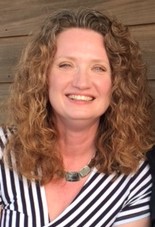I don’t usually make resolutions for a new year, but this year I did. I resolved to read more best sellers in all types of genres—those I would naturally pick up and those I would naturally pass over.
I love to read, but you might be surprised to know I don’t do a lot of it for pleasure. As a full-time editor, it’s not uncommon for me to spend six to eight hours each workday reading clients’ projects. It’s hard at that point to sit down again and read for pleasure, so I end up saving my personal reading for bedtime … which means I read for pleasure for about ten minutes a day—if I’m lucky—before I fall asleep.
I realized that as both an editor and a writer, it’s really important for me to stay up-to-date on what’s selling and what people are raving about. Why? Because I want to know how storytelling is evolving and how it’s remaining the same. What types of protagonists and antagonists are readers finding interesting? How are settings changing—if at all? What themes are resonating with readers and why those themes, in both nonfiction and fiction?
Now, don’t get me wrong. I’m not resolving to read best sellers in an effort to guide my clients (or my own writing) to ride a trend. That hardly ever works. By the time you figure out what trend is selling and write a book to fit within it, that trend is old and tired and done. That’s not my goal.
However, the manner of storytelling does evolve. People’s tastes evolve. Writing isn’t static. I need to continue to educate myself to be the best writer and editor I can be, and reading is a huge part of that. Best sellers are best sellers because thousands of people have responded positively to them. Those authors are doing something right, and I want to learn from them.
My plan then is to carve out—during my workday—a half hour to an hour to read for pleasure. Then I want to share what I’m learning with you here. I encourage you to respond to what I share. If you’ve read the book I’m currently reading, then you can respond specifically to that. But even if you haven’t, you can still respond to the element(s) I’m addressing. I’m going to be reading as a writer (and an editor), and I’ll be sharing my observations I’ve made wearing those hats.
I thought that my first book would be Jay Asher’s What Light. Asher’s debut YA novel, Thirteen Reasons Why, was a devastating book, and his writing was spot-on. He nailed the teens’ voices and drew their world so clearly. I was excited to see he had a new book out, and I digitally borrowed What Light last week. Unfortunately, it’s not as visceral for me as his debut, so I’m walking away from it and starting a new one. I didn’t hate it though, and I may in fact go back to it sometime later. It’s a romance, and I don’t read a lot of those. I’m sure I could learn something from him.
I do want to share something I liked from the early pages of What Light. Asher wrote:
The smell of tree resin is thick in the wet air, and the damp soil tugs at my heavy boots. Branches scratch at my sleeves as I pull my phone from my pocket.
For me, this is a well-crafted setting description. In a few words, he puts the reader in that forest. He doesn’t say, “It smells like pine (or fir) trees.” He refers to the “smell of tree resin.” That’s so much more specific, so much clearer. Plus, using the word “resin” made me actually picture the sap beading on the trees.
Because he mentions “the wet air” as well as “the damp soil,” and because he says the smell is “thick” in the air, we can almost feel the moisture. Each description reinforces the feeling of the next, doing more to draw us in. In addition, how many of us haven’t walked across ground that was so muddy we felt in danger of stepping out of our shoes? I have—I’ve actually stepped out of my boots because the mud was so thick. For me, that was a great, small detail that helped cement me further in the scene.
The final detail of the branches scratching the narrator’s jacket is just one more way he works to pull the reader physically into the scene—and it reinforces the setting as a whole too. In those two short sentences, I was with the narrator in that forest.
I don’t always remember to think about the importance of those small, specific, well-chosen details that set a scene. He didn’t go into paragraph after paragraph to describe this forest; he didn’t need to because he paid attention to every word he used.
It’s a good lesson.
Since I gave up on What Light, I started A Man Called Ove: A Novel by Fredrik Backman. I’m only about twenty pages in, but I can already tell he has honed his character-development skills. I’ll talk more about this in my next blog.
Until then, if you’re interested in talking about your work in progress or your completed book, send me an email at sharon@editorsharonhoneycutt.com and share your questions and concerns. Let me see how I can help you. As always, I invite you to leave comments and questions below. I’m looking forward to hearing from you!
